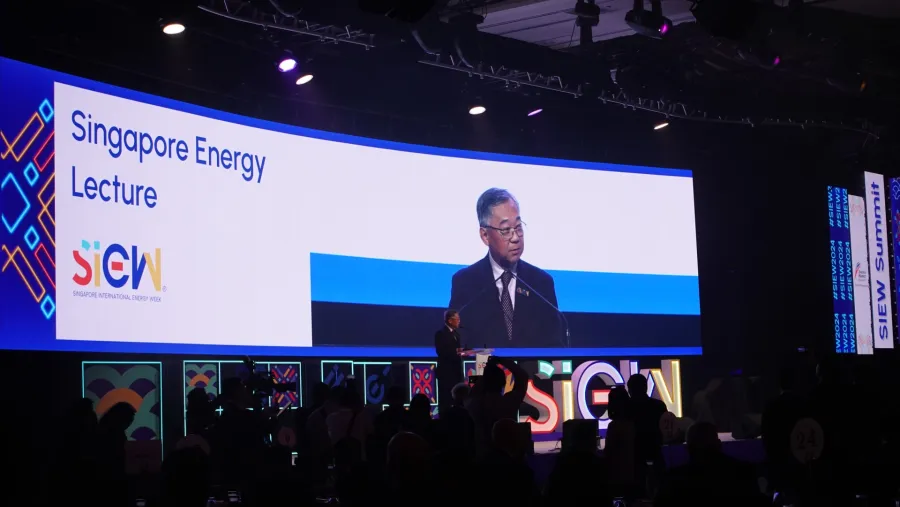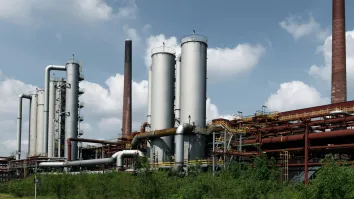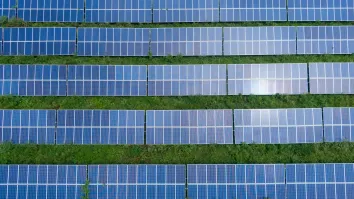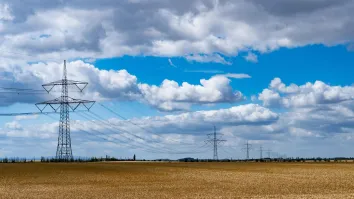
Singapore deputy PM seeks quicker climate action
Typhoons, wildfires and heatwaves are likely to get worse, Minister Gan Kim Yong said.
Southeast Asian countries should fast-track the deployment of low-carbon energy solutions on the production and consumption fronts to cut global emissions by more than 90% by 2050, according to Singapore’s deputy prime minister.
“Production must progressively shift to a cleaner energy mix, whilst consumption must shift to greater energy efficiency,” Gan Kim Yong, who is also Trade minister, said in a speech at the Singapore International Energy Week last month.
He said the world has been battered by extreme weather events this year — from hurricanes and tropical storms, to wildfires and heatwaves — driving home the impact of climate change. “Unfortunately, this is likely to get worse in the years to come. There is therefore a growing urgency for us to accelerate the current pace of decarbonisation,” he added.
Gan said countries in the region should pursue low-carbon solutions that are commercially mature, invest in the commercialisation of solutions that are technologically feasible, and further drive research and development in technologies that are less mature.
“To increase the sustainability of our power supply, we will need to develop and study every possible decarbonisation pathway, whilst safeguarding our energy security and ensuring cost competitiveness,” he added.
Commercially competitive technologies, such as solar, onshore wind, hydropower, and large nuclear plants could only cut greenhouse gas pollution by 10%, the Trade chief said, citing a McKinsey & Co. study in 2023.
About 45% will have to come from technologies such as offshore wind, biofuels and heat pumps, which require state support to be competitive, Gan said. Another 40% will depend on technologies that have been proven in prototypes but not yet deployed at scale, including small modular reactors, carbon capture, and e-fuels — synthetic fuels made from renewable energy.
Gan noted that whilst Singapore is a small country that accounts for only 0.1% of global emissions, it will do its part to accelerate the transition to a low-carbon world by focusing on resilience, reliability, and responsiveness.
He said the city-state has been scaling up solar deployment to reach at least 2 gigawatt-peak (GWp) by 2030. Singapore now has 1.35 GWp, a fivefold increase from 2019.
Gan said Singapore has also deployed a battery energy storage system on Jurong Island to mitigate unexpected drops in solar power.
The government has also issued conditional licences to five projects from Indonesia to import 2 GW of low-carbon electricity by 2035, as well as to four projects for an additional 3.6 GW from Cambodia, Indonesia and Vietnam.
Cross-border electricity trading with Malaysia has also started, whilst electricity traded under the Laos-Thailand-Malaysia-Singapore power integration project has been doubled to 200 megawatts (MW).
“In time, these efforts will deepen energy integration and support the advancement of the ASEAN Power Grid,” Gan said.
The deputy prime minister noted that whilst efforts to shift to clean energy continue, natural gas still plays a crucial role in ensuring energy security. State-owned Singapore LNG Corp. Pte Ltd will develop a second LNG terminal at Jurong Port as an offshore terminal that will include a floating storage and regasification unit, he said.
The terminal will have 5 million tonnes of yearly throughput capacity, a 50% increase in the city-state’s liquefied natural gas capacity.
“The task ahead to transform the global energy system is monumental,” Gan said. “Singapore may be small, but we stand ready to play our part in the energy transition.”
Southeast Asia is projected to account for 25% of the global energy demand by 2034, Fatih Birol, executive director at the International Energy Agency (IEA), told the energy forum.
The region’s solar capacity is expected to reach 40 gigawatts (GW) this year, both in solar panel installations and manufacturing driven by countries like Vietnam, Malaysia, and Thailand, said the official from IEA, which recently opened its first office outside its Paris headquarters in Singapore.
Birol said they chose Singapore as a gateway to other Southeast Asian economies like Indonesia and the Philippines, which are both major producers of critical minerals needed in the transition to renewable energy.
“Singapore sits at the heart of Southeast Asia, and it's a meeting point for international and business activities and the regional hub for sustainable financing and innovation,” he added.

















 Advertise
Advertise







